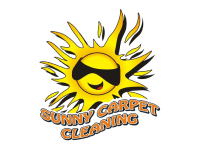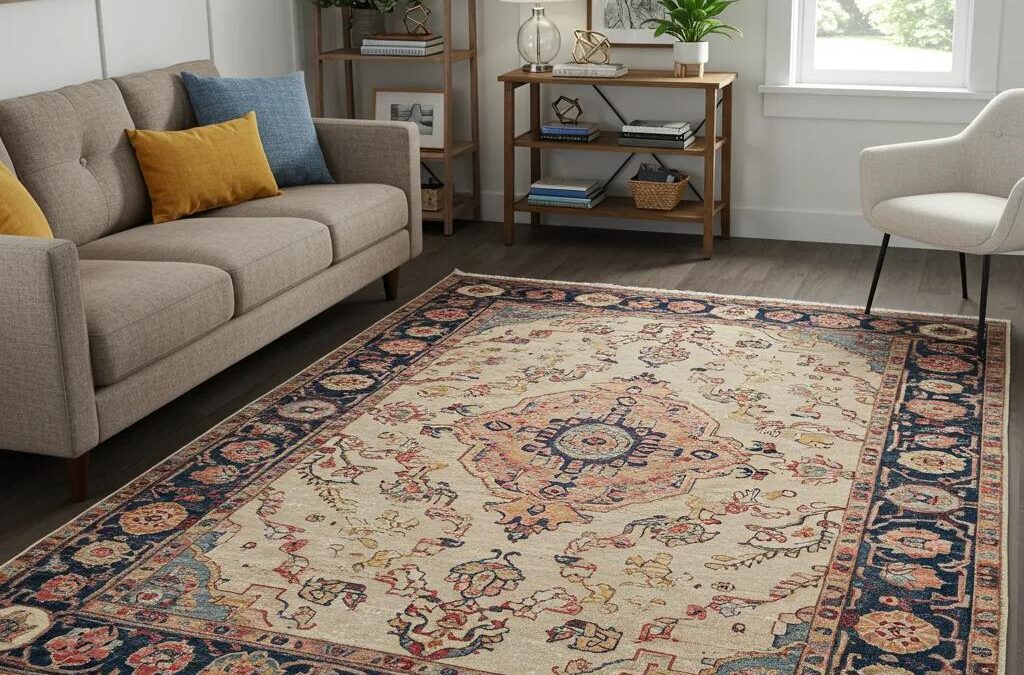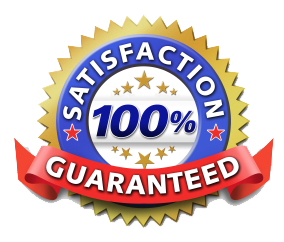Keeping your area rugs in pristine condition requires understanding fiber types, spot-treatment techniques, professional methods, and preventive strategies. This guide delivers expert advice on identifying rug materials, performing routine home care, recognizing when deep-cleaning demands professional intervention, selecting the ideal cleaning method for each fiber, and protecting your investment for years to come. You’ll learn how wool, silk, synthetic, jute, and cotton rugs differ in cleaning needs; master essential vacuuming, stain-removal, and eco-friendly solutions; discover the immersive processes top technicians use; and explore pad placement and rotation tips that extend rug life. We’ll also explain why local conditions in Littleton, Lakewood, and Highlands Ranch influence cleaning frequency and how Sunny Carpet Cleaning’s IICRC-certified team combines steam, dry, and immersion washing with non-toxic detergents to remove allergens and restore vibrant colors. By following these practical, step-by-step recommendations, homeowners and businesses can confidently maintain area rugs, prevent irreversible damage, and schedule free professional estimates when challenges exceed DIY scope.
What Are the Different Types of Area Rugs and Their Cleaning Needs?
Area rugs encompass a range of materials and construction styles, each demanding tailored cleaning to preserve texture, color, and structural integrity. Properly matching cleaning techniques to rug type prevents fiber damage and dye bleeding while maximizing dirt removal and allergen control. For instance, steam cleaning rejuvenates synthetic fibers, whereas wool rugs benefit from pH-neutral solutions and minimal moisture. Knowing your rug’s composition ensures you apply the right maintenance plan and avoid costly restoration later.
Which Materials Are Common in Area Rugs and How Do They Affect Cleaning?
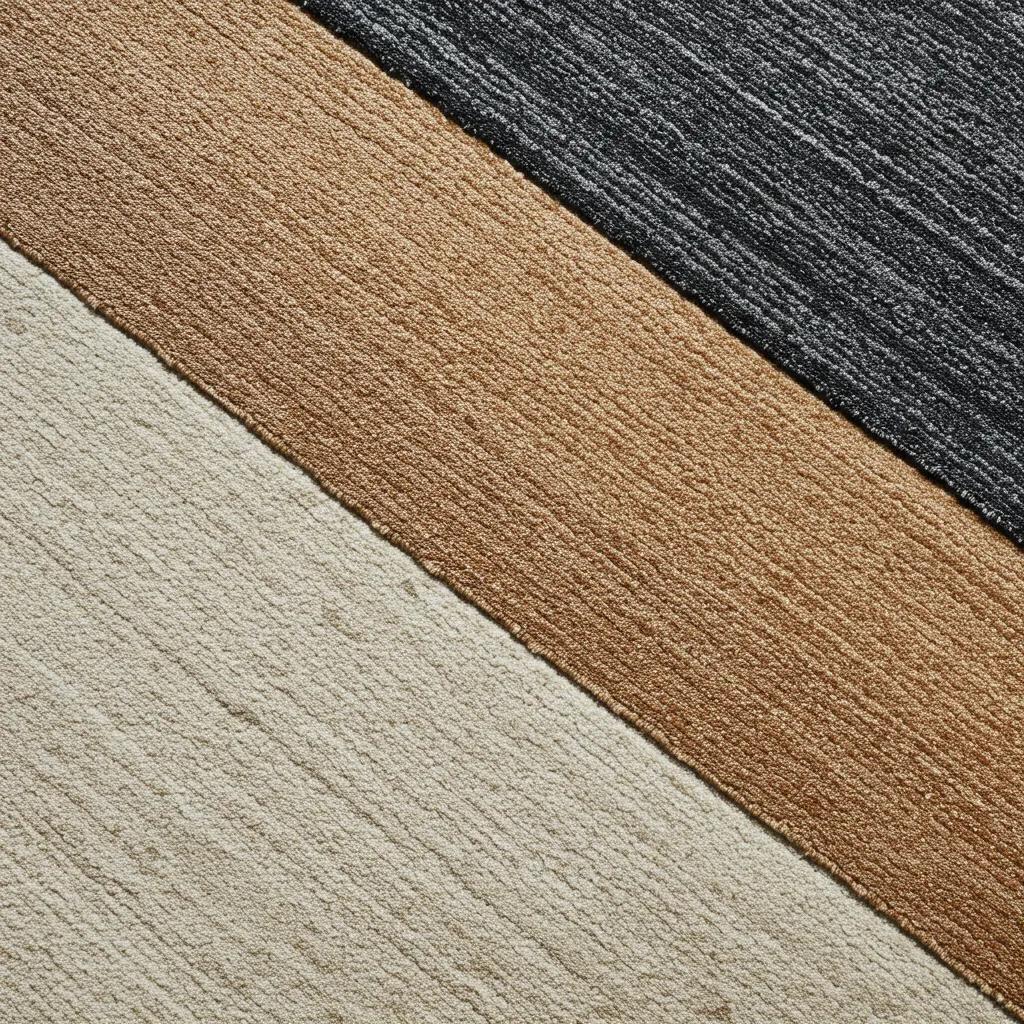
Area rugs commonly feature wool, silk, synthetic fibers, jute, or cotton, and each material responds differently to water, detergents, and agitation. Wool fibers resist soil naturally but shrink if overwet, silk displays exceptional luster but requires gentle spot treatment, synthetic blends tolerate steam extraction, jute’s coarse weave demands low-moisture methods, and cotton rugs handle most mild detergents.
- Wool Rugs: Naturally stain-resistant fibers that require cold water and gentle wool-safe detergent to prevent felting.
- Silk Rugs: Delicate filament silk demands neutral pH cleaners and minimal mechanical action to maintain sheen.
- Synthetic Rugs: Polyester and nylon withstand hot water extraction and moderate agitation for deep cleaning.
- Jute Rugs: Natural seagrass and hemp weaves call for low-moisture vacuuming and spot cleaning to avoid mold.
- Cotton Rugs: Easy-care fiber that can be shampooed with mild soap but may shrink without controlled drying.
These material differences guide safe cleaning approaches and prepare you for identifying your rug’s needs in the next section.
How Can You Identify Your Rug Type for Proper Care?
Identifying your rug type begins with examining labels, weave patterns, and fiber appearance to ensure correct cleaning. Labels often specify material content and manufacturer care instructions, while weave tightness and fringe structure hint at manual knotting or machine-tufted construction. A quick fingertip test—rubbing a hidden corner—can reveal synthetic sheen or natural fiber fuzziness. By confirming whether your rug is hand-knotted, hand-tufted, or machine-made, you match professional processes such as immersion washing or low-moisture cleaning to the rug’s tolerance.
An accurate rug-type assessment prevents fiber distortion and dye migration. Understanding these characteristics transitions you seamlessly into the specialized needs of prized Oriental and Persian antiques.
What Special Care Do Oriental and Persian Rugs Require?
Oriental and Persian rugs, prized for hand-knotted artistry and natural dyes, necessitate delicate handling to preserve historical value and intricate patterns. These antique rugs often contain vegetable dyes that may bleed when wet, and natural wool or silk fibers that can felt or degrade under high alkalinity. Expert technicians conduct dye-fastness tests, apply pH-balanced hand-washing formulas, and use gentle immersion followed by controlled drying to maintain vibrancy and hand-feel.
When cleaning priceless heritage pieces, professionals also assess fringe integrity, repair loose knots, and apply protective finishing agents. This specialized care ensures your Oriental or Persian rug retains its beauty and structural resilience, paving the way for effective at-home maintenance strategies.
How Can You Clean and Maintain Area Rugs at Home?
Routine home maintenance preserves appearance and delays the need for deep professional cleaning by removing surface soil, debris, and early stains before they set. A consistent regimen rooted in vacuuming, rotation, and immediate spot treatment prevents fiber abrasion and color fading. Proper at-home care supports overall rug health and keeps allergens at bay until professional services are required.
What Are Essential Daily and Weekly Maintenance Tips for Area Rugs?
Effective rug care hinges on four core practices performed daily or weekly to control dirt accumulation and wear patterns.
- Daily Vacuuming – Use a suction-only setting on wool or delicate rugs to lift surface dust without agitating fibers and a rotating brush for durable synthetics.
- Weekly Rotation – Rotate every 90 degrees to distribute foot traffic evenly and prevent shading or pile compression in high-use areas.
- Frequent Shaking or Beating – For small throw rugs, shake outdoors or gently beat to dislodge embedded debris.
- Rug Pad Installation – Place a cushioned, non-slip pad beneath to minimize slippage, absorb impact, and extend fiber life.
Maintaining these methods reduces abrasion and ensures balanced wear, setting the stage for effective stain-removal techniques.
How Do You Remove Common Stains Like Coffee, Wine, and Pet Urine?
Spot-treating stains promptly prevents permanent discoloration and odor retention by interrupting dye bonding and microbial growth. Refer to the table below for targeted stain-removal agents and application guidance.
| Stain Type | Recommended Agent | Application Method |
|---|---|---|
| Coffee & Tea | White vinegar + water solution | Blot with 1:3 vinegar-water, wait 5 minutes, rinse with clear water |
| Red Wine | Baking soda paste | Apply soda paste, let lift pigment for 30 minutes, vacuum residue |
| Pet Urine | Enzymatic cleaner | Saturate area, allow enzyme action for 10 minutes, blot dry |
| Oil-Based Spills | Mild dish soap solution | Gently agitate soap foam, blot until clear, rinse with water |
Each targeted solution interrupts stain-setting mechanisms and restores fiber appearance. Next, we’ll explore how to substitute eco-friendly alternatives for common household cleaners.
What Are the Best Eco-Friendly and Non-Toxic Cleaning Solutions for Home Use?
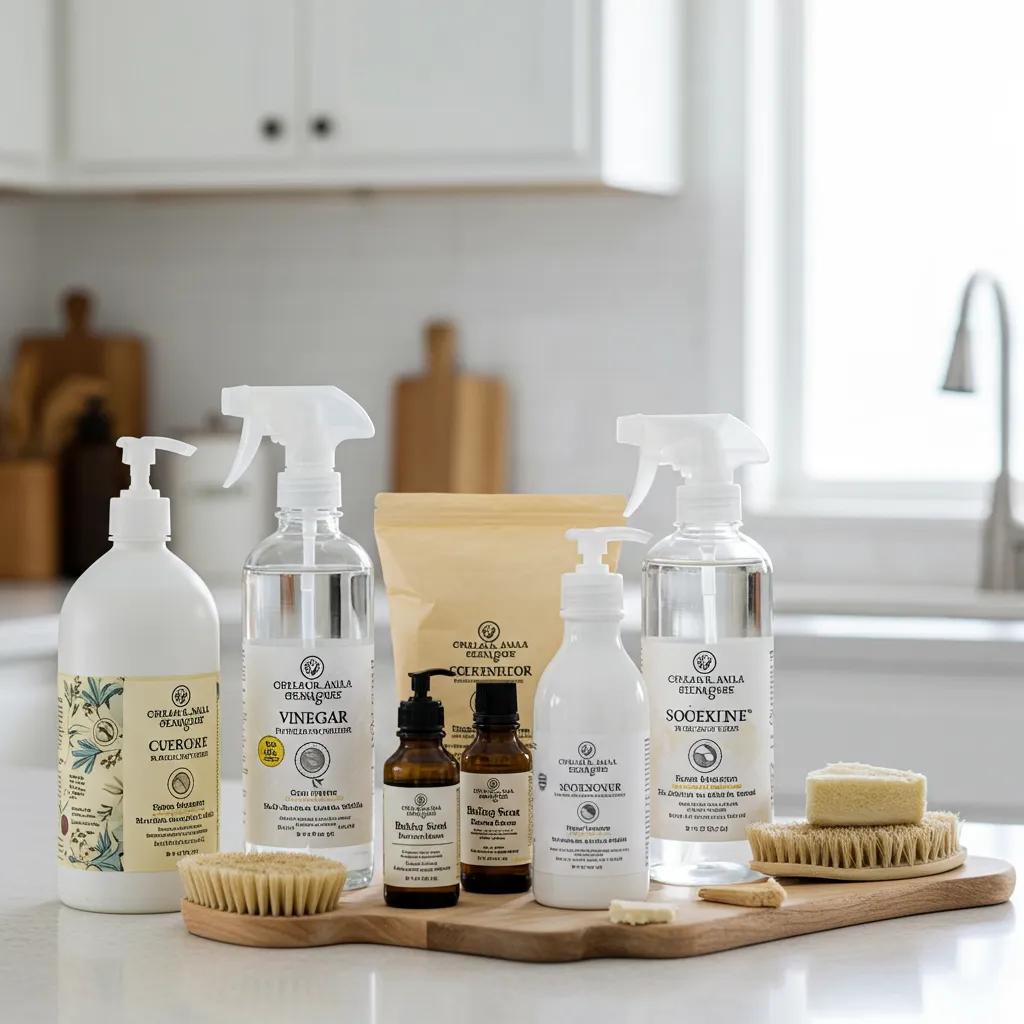
Natural, biodegradable cleaners support healthy indoor air quality and safeguard children, pets, and rug dyes. Vinegar’s acetic acid breaks down mineral deposits, baking soda neutralizes odors, and mild castile soap lifts soils without leaving harsh residues. Essential oils such as lemon or tea tree add antimicrobial properties while maintaining fiber integrity.
By preferring non-toxic solutions, you reduce environmental impact and create a safer living space—making home maintenance both effective and eco-responsible.
When Should You Call Professional Rug Cleaning Services?
Yes, professional intervention becomes necessary when deep-embedded dirt, delicate fibers, or extensive damage exceed at-home capabilities. Technicians employ advanced cleaning methods, equipment, and quality controls to ensure thorough soil extraction, allergen removal, and fiber restoration without risking shrinkage, dye bleeding, or fiber distortion.
What Are the Limitations of DIY Rug Cleaning?
DIY cleaning often fails to extract deep-seated soil, eradicate allergens, or restore fiber loft in large or antique rugs. Over-wetting can cause mildew, pet dander may remain trapped in densely knotted areas, and unsuitable detergents may strip natural lanolin from wool. Additionally, improper drying in humid environments like Lakewood or Highlands Ranch can lead to mold growth and musty odors.
Recognizing these limitations highlights the value of professional processes that guarantee comprehensive cleaning and safe drying.
What Does a Professional Area Rug Cleaning Process Involve?
A certified, full-service cleaning typically follows a multi-step protocol designed to maximize cleanliness and preserve rug quality:
- Detailed Inspection & Dusting – Technicians identify fiber type, damage, and soil level, then use specialized dusting machines to remove loose debris.
- Pre-Treatment – Application of pH-balanced solutions to loosen embedded oils and stains without harming dyes.
- Immersion Washing or Steam Extraction – Immersion involves submerging the rug in a gentle wash bath, while steam extraction uses high-temperature water and suction to deep-clean synthetic and durable fibers.
- Rinsing & Neutralizing – Thorough water rinse followed by acid-balanced neutralizer to lock dye and prevent alkaline residue.
- Controlled Drying – Climate-controlled drying racks and airflow systems remove moisture quickly to inhibit mildew.
- Final Grooming & Inspection – Fiber grooming restores pile alignment and a final quality check ensures satisfaction.
This structured process removes up to 98% of allergens and revives rug appearance, outpacing typical at-home methods.
How Do Professionals Handle Specialty Rugs Like Oriental and Persian?
Specialty rugs demand hand-washing techniques, fiber-specific detergents, and dye-stability assessments to avoid color run. Technicians perform spot dye-fixation tests, use soft brushes on raised patterns, and employ low-moisture or hand-immersion methods that maintain hand-knotted structure. Expert fringe restoration and bespoke reweaving services address edge wear, ensuring that each priceless heirloom returns to showroom condition.
What Are the Best Rug Cleaning Methods and Solutions?
Choosing the right cleaning method aligns fiber properties with extraction technique to achieve optimal soil removal, color preservation, and fiber resilience. Steam cleaning, dry cleaning, immersion washing, and eco-friendly encapsulation each target specific rug compositions and degree of soiling, delivering professional-grade results.
How Does Steam Cleaning Work and Which Rugs Benefit Most?
Steam cleaning, or hot water extraction, propels pressurized hot water mixed with biodegradable detergent deep into rug fibers and immediately vacuums away dissolved soils. Synthetic rugs and colorfast synthetics excel under this method due to their resilience to heat and agitation. The combination of heat and mechanical suction removes up to 90% of embedded grit and allergens, promoting healthier indoor air quality.
Since steam cleaning uses rapid drying systems, it preserves pile height and reduces downtime—ideal for busy homes and offices seeking swift rug revival.
Efficacy of Dry Steam Cleaning for Carpets and Area Rugs Cleaning efficacy of high-efficiency particulate air-filtered vacuuming and “dry steam” cleaning on carpet. … lead dust in carpets, and dry steam cleaning further reduces … one wall-to-wall carpet or area rug not smaller than 8 ft × 10 ft.Cleaning efficacy of high-efficiency particulate air-filtered vacuuming and “dry steam” cleaning on carpet, LM Yiin, 2007
When Is Dry Cleaning Recommended for Area Rugs?
Dry cleaning employs minimal moisture and encapsulating agents that crystallize dirt particles for easy vacuum removal, making it perfect for delicate wool, silk, and antique rugs. This method avoids water-induced felting, dye bleeding, and shrinkage. Dry compounds or pad systems disperse cleaning powder across the surface, then specialized vacuums lift away both compound and loosened soils.
Dry cleaning safeguards fragile fibers and natural dyes while delivering gentle yet effective soil extraction.
What Eco-Friendly Cleaning Methods Are Available Professionally?
Green professional services integrate non-toxic detergents, biodegradable surfactants, and encapsulation technologies that trap and neutralize soil without harsh chemicals. Low-moisture systems reduce water consumption and energy usage, while ozone-based disinfection neutralizes odor-causing microbes. These sustainable approaches align with eco-conscious values and ensure safe environments for children and pets.
How Can You Protect and Extend the Life of Your Area Rugs?
Proactive measures, guided by material-specific care and professional maintenance intervals, prevent premature wear, color dulling, and fiber breakdown. By combining daily vigilance, strategic placement, and periodic deep cleaning, you maximize return on investment and uphold rug appearance for decades.
What Preventative Maintenance Practices Help Keep Rugs Pristine?
Regular vacuuming, prompt spill response, strategic rotation, and use of rug pads form the cornerstone of long-term rug preservation. Vacuuming twice weekly prevents soil abrasion, blotting spills within seconds stops dye penetration, rotating every three months balances traffic wear, and nonslip pads reduce friction and cushion impact. Together, these actions minimize damage and maintain even pile height.
Consistent preventative maintenance creates a foundation for the enhanced longevity professional services deliver.
Home Cleaning Methodologies for Carpets Made from Man-Made Fibers Effectiveness of a home cleaning method for selected pile floor coverings manufactured from man-made fibers. Application of a soil retardant after each cleaning resulted in reduced soiling. This study investigated a home method for cleaning carpets composed of various fibers, including rayon, nylon, and Verel modacrylic, which are man-made fibers. Effectiveness of a home cleaning method of selected pile floor coverings manufactured from man-made fibers, Unknown Author, 1960
How Does Professional Cleaning Improve Rug Longevity and Appearance?
Professional cleaning removes up to 95% of deep-embedded debris, allergens, and oil buildup that DIY techniques leave behind, restoring original pile resilience and brilliant hues. Enzyme-boosted detergents break down stubborn protein stains, while controlled drying preserves fiber structure. Post-cleaning fiber grooming realigns tufts for an even, plush surface—extending rug life by preventing permanent matting.
These thorough interventions translate into fewer fiber repairs and sustained aesthetic appeal.
What Are the Benefits of Using Rug Pads and Proper Placement?
Rug pads act as a protective barrier by absorbing impact, preventing slipping, and reducing direct abrasion on fibers. A quality pad extends rug life by up to 30%, cushions foot traffic, and maintains shape by minimizing edge curling. Properly placed rugs also avoid prolonged sun exposure that fades dyes and should be kept away from doorways to reduce high-traffic dirt infiltration.
Integrating pad usage and strategic placement supports fiber health and complements professional cleaning schedules.
Procedures for Cleaning and Identification of Wool Textiles Procedures for cleaning and mounting wool textiles sufficient fabric area to permit examination of the weave. For a text on the identification of … useful identification procedures and excellent photomicrographs of common textiles …Cleaning and mounting procedures for wool textiles.
Where Can You Find Expert Area Rug Cleaning Services Near You?
Local environmental conditions—such as low humidity in Littleton and dust accumulation in Lakewood—require tailored cleaning frequency and techniques. Ensuring you partner with a certified local provider delivers optimal results and supports community reliability.
Why Choose Sunny Carpet Cleaning for Area Rug Cleaning in Littleton, Lakewood, and Highlands Ranch?
- Certified Technicians: Trained in specialty rug fibers and advanced soil-removal methods.
- Eco-Friendly Solutions: Non-toxic detergents ensure kid-and-pet-safe environments.
- Satisfaction Guarantee: Comprehensive inspections and follow-up ensure 100% client approval.
- Free Estimates: Transparent pricing and no-obligation quotes build trust from the first call.
How Do Local Conditions Affect Rug Cleaning Needs?
Semi-arid climate in Highlands Ranch accelerates dust infiltration, while Lakewood’s seasonal pollen spikes increase allergen load in fibers. Pet-friendly Littleton homes face higher risks of urine stains and odors. These regional factors demand more frequent deep cleaning cycles and specialized stain-neutralizing treatments to maintain rug health and indoor air quality.
Recognizing how local geography influences rug soil patterns helps you plan maintenance intervals effectively.
How Can You Book a Professional Rug Cleaning Service?
Booking a professional service is simple: call the Sunny Carpet Cleaning office for a free estimate, describe your rug type and condition, and schedule an appointment at your convenience. Technicians arrive fully equipped with portable cleaning systems, conduct a pre-inspection, and complete on-site or off-site cleaning according to your preference. Prompt scheduling ensures timely care that safeguards rug appearance and home environment.
What Are Common Questions About Area Rug Cleaning?
Understanding routine queries empowers you to maintain rugs confidently and know when expert intervention is necessary. The answers below cover frequency, safety, advanced stain techniques, and fiber-friendly solutions.
How Often Should You Clean Your Area Rugs?
Monthly vacuuming supplemented by professional deep cleaning every 12–18 months ensures consistent removal of dust, allergens, and ground-in soils. High-traffic or pet-occupied homes may require biannual professional services to prevent irreversible fiber matting and odor retention. Establishing a seasonal cleaning schedule aligns with local environmental changes and rug usage patterns.
Can You Steam Clean an Area Rug Safely at Home?
Yes, steam cleaning small synthetic or low-pile rugs at home is safe when using manufacturer-approved hot water extraction machines. Ensure proper drying by elevating the rug on a rack or hanging it outdoors to prevent mildew. However, wool, silk, and antique rugs should undergo professional steam or immersion cleaning under controlled conditions to avoid shrinkage and color bleeding.
How Do Professionals Remove Old or Stubborn Stains?
Professionals employ enzyme-enhanced pre-treatments to break down protein and tannin-based stains, followed by pH-balanced spotters and targeted agitation. Specialty solvents and heat-activated detergents lift set-in pigments, while rinse-and-neutralize protocols lock dyes and prevent residue. This multi-step approach restores uniform color and eliminates odors unreachable by standard home remedies.
What Cleaning Solutions Are Safe for Delicate Rugs?
Delicate wool and silk rugs benefit from natural surfactants such as mild wool-safe detergent, non-ionic soaps, and pH-neutralizers formulated to maintain lanolin content and fiber strength. Professionals also use buffered rinsing agents that lock vegetable dyes and protect against alkaline-induced abrasion. These gentle formulas preserve sheen and prevent long-term fiber degradation.
Preserving the beauty and durability of your area rugs hinges on combining material-specific home maintenance with periodic professional care. By understanding fiber characteristics, mastering spot removal, choosing eco-friendly solutions, and partnering with a certified local provider, you ensure your rugs remain vibrant and allergen-free. Schedule your free estimate today with Sunny Carpet Cleaning to protect your investment and enjoy healthier, more inviting living spaces.
Conclusion
Maintaining the beauty and longevity of your rugs through professional area rug cleaning is achievable through a combination of informed home care and professional cleaning services. By understanding the unique needs of different rug materials and implementing effective maintenance strategies, you can prevent damage and enhance their appearance. For optimal results, consider scheduling a free estimate with Sunny Carpet Cleaning to ensure your rugs receive the expert care they deserve. Protect your investment and enjoy a healthier, more inviting living space today.
